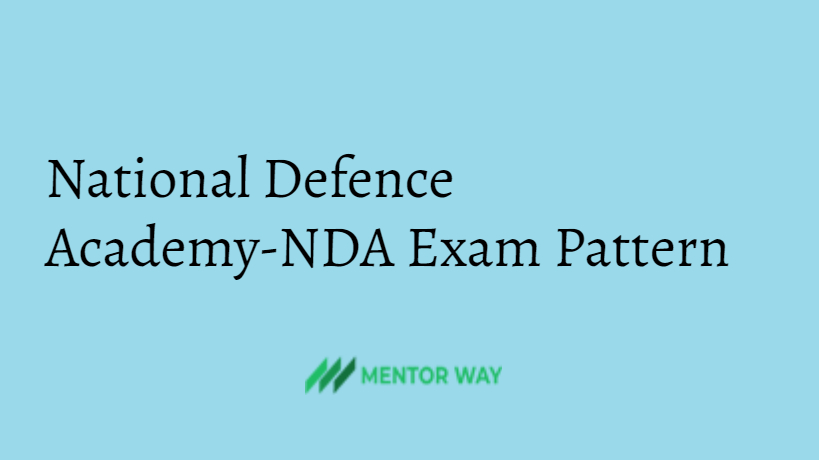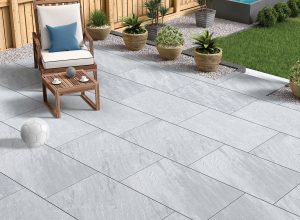National Defence Academy-NDA Exam Pattern
6 min read
Educational Qualification Required For NDA Exam
- For Army wing of NDA: You should have passed class 12th examination.
- For Air Force and Naval Wings of NDA and for Indian Naval Academy: You should have passed class 12th examination with Physics and Mathematics.
Candidates who are appearing in the 12th Class under the 10+2 pattern of School Education or equivalent examination can also apply for this examination.
Age Limit, Gender and Marital Status(NDA Exam)
For NDA Exam (II) 2018, only unmarried male candidates born not earlier than 02nd January, 2000 and not later than 1st January, 2003 are eligible.
Physical Standards For NDA Exam
You must be physically fit according to physical standards.
NDA Exam Pattern
There are two papers with objective type questions. The Question papers of Mathematics and Part B of General Ability Test is set in Hindi as well as English.
| Subject | Duration | Questions | Marks |
| Mathematics | 2 hours 30 minutes | 120 | 300 |
| General Ability Test | 2 hours 30 minutes | 150 | 600 |
| Total Marks | 900 | ||
| SSB Test / Interview | 900 |
The papers in both the subjects consist of objective type questions only. General Ability Test paper is divided into two parts – Part A and Part B. Part A has 50 English questions and Part B has 100 General Knowledge questions.
Negative Marking
There is a penalty for wrong answers in the Objective Type Question Papers.
Paper I: Mathematics (Total 300 marks) Code:01
-
Algebra
Concept of a set, operations on sets, Venn diagrams. De Morgan laws. Cartesian product, relation, equivalence relation.
Representation of real numbers on a line. Complex numbers – basic properties, modulus, argument, cube roots of unity. Binary system of numbers. Conversion of a number in decimal system to binary system and vice-versa.
Arithmetic, Geometric and Harmonic progressions. Quadratic equations with real coefficients. The solution of linear inequations of two variables by graphs. Permutation and Combination. Binomial theorem and its application. Logarithms and their applications.
-
Matrices and Determinants
Types of matrices, operations on matrices. The determinant of a matrix, basic properties of determinants. Adjoint and inverse of a square matrix, Applications – Solution of a system of linear equations in two or three unknowns by Cramer’s rule and by Matrix Method.
-
Trigonometry
Angles and their measures in degrees and in radians. Trigonometrical ratios. Trigonometric identities Sum and difference formulae. Multiple and Sub-multiple angles. Inverse trigonometric functions. Applications – Height and distance, properties of triangles.
-
Analytical Geometry of two and three dimensions
Rectangular Cartesian Coordinate system. Distance formula. Equation of a line in various forms. The angle between the two lines. The distance of a point from a line. Equation of a circle in standard and in general form. Standard forms of parabola, ellipse and hyperbola. Eccentricity and axis of a conic.
Point in a three-dimensional space, distance between two points. Direction Cosines and direction ratios. Equation of a plane and a line in various forms. Angle between two lines and the angle between two planes. Equation of a sphere.
-
Differential Calculus
Concept of a real valued function – domain, range and graph of a function. Composite functions, one to one, onto and inverse functions. Notion of limit, Standard limits – examples. Continuity of functions – examples, algebraic operations on continuous functions. Derivative of function at a point, geometrical and physical interpretation of a derivative – applications. Derivatives of sum, product and quotient of functions, a derivative of a function with respect of another function, a derivative of a composite function. Second order derivatives. Increasing and decreasing functions. Application of derivatives in problems of maxima and minima.
-
Integral Calculus and Differential Equations
Integration as inverse of differentiation, integration by substitution and by parts, standard integrals involving algebraic expressions, trigonometric, exponential and hyperbolic functions. Evaluation of definite integrals – determination of areas of plane regions bounded by curves – applications. Definition of order and degree of a differential equation, formation of a differential equation by examples. General and particular solution of a differential equation, solution of first order and first degree differential equations of various types – examples. Application in problems of growth and decay.
-
Vector Algebra
Vectors in two and three dimensions, magnitude and direction of a vector. Unit and null vectors, the addition of vectors, scalar multiplication of vector, scalar product or dot product of two vectors. Vector product and cross product of two vectors. Applications-work done by a force and moment of a force, and in geometrical problems.
-
Statistics and Probability
Statistics: Classification of data, Frequency distribution, cumulative frequency distribution – examples. Graphical representation – Histogram, Pie Chart, Frequency Polygon – examples. Measures of Central tendency – Mean, Median and Mode. Variance and standard deviation – determination and comparison. Correlation and regression.
Probability: Random experiment, outcomes and associated sample space, events, mutually exclusive and exhaustive events, impossible and certain events. Union and Intersection of events. Complementary, elementary and composite events. Definition of probability – classical and statistical – examples. Elementary theorems on probability – simple problems. Conditional probability, Bayes’ theorem – simple problems. Random variable as function on a sample space. Binomial distribution, examples of random experiments giving rise to Binomial distribution.
Paper II: General Ability Test (Total 600 marks) Code :02
Part A- English:
The question paper in English will be designed to test the candidate’s understanding of English and workman like use of words. The syllabus covers various aspects like : Grammar and usage, vocabulary, comprehension and cohesion in extended text to test the candidate’s proficiency in English
Part B- General Knowledge:
The question paper on General Knowledge will broadly cover the subjects: Physics, Chemistry, General Science, Geography and Current Events.
Section A Physics– Physical Properties and States of Matter, Mass, Weight, Volume, Density and Specific Gravity, Principles of Archimedes, Pressure Barometers, Motion of Objects, Velocity and Acceleration, Newton’s Law of Motion, Force and Momentum, Parallelogram of Forces, Stability and Equilibrium of Bodies, Gravitation , Elementary ideas of Work ,power and Energies, Effects of Heat and various topics.
Section B Chemistry – Physical and Chemical Changes, Elements, Mixtures and Compounds ,Symbol, Formulae and Simple Chemical Equations, Law of Chemical Combination (excluding problems), Properties of Air and Water, Preparation and Properties of Hydrogen, Oxygen, nitrogen and Carbon dioxide, Oxidation and Reduction, Acids, Bases and Salts, Carbon Different Forms, Fertilizers Natural and Artificial, Materials used in the preparation of substances like soap, Glass, Ink, Paper, Cements, Paints, Safety Matches and Gunpowder, Elementary Ideas about the Structures of Atom, Atomic Equivalent and Molecular Weights
Sec.C General Science – Difference between Living and Non Living, Basis of Life- Cell, Protoplasm and Tissues, Growth and Reproduction in Plants and Animals, Elementary Knowledge of Human Body and its important organs, Common Epidemics and their causes and prevention, Food-Source of Energy for man, Constituents of Food, Balanced Diet, The Solar System- Meteors and Comets, Achievements of Eminent Scientists
Section D History and Freedom Movement– A broad survey of Indian History with emphasis on Culture and Civilization, Freedom movement in India, Study of Indian Constitution and Administration, Elementary Knowledge of Five Year Plans of India , Panchayati Raj, Cooperative and Community Development, Bhoodan, Sarvodaya, National Integration and Welfare State, Basic Teachings of Mahatma Gandhi , Forces Shaping the modern world, Renaissance, Exploration and Discovery , War of American Independence, French Revolution, Industrial Revolution, Russian Revolution, Impact of Science and Technology on Society, Concept of One World, United Nations, Panchsheel ,Democracy, Socialism and Communism , Role of India in the present world
Sec. E Geography– The Earth its shape and size, Latitudes and longitudes, Concept of Time and International Date Line, Movements of Earth and their effects, Origin of Earth, Rocks and their classification, Weathering – Mechanical and Chemical , Earthquakes and Volcanoes, Ocean Currents and tides, Atmosphere and its compositions, Temperature and Atmospheric Pressure, Planetary Winds, Cyclones and Anti Cyclones, Humidity , Condensation and Precipitation, Types of Climate, Major Natural Regions of World, regional geography of India and related topics
Sec. F Current Events– Knowledge of Important events that have happened in India in recent years, Current important world events, Prominent Personalities both Indian and International including those connected with cultural activities and sports.
We hope that this article helped you.Visit Mentor Way For regular updates on different exams.



